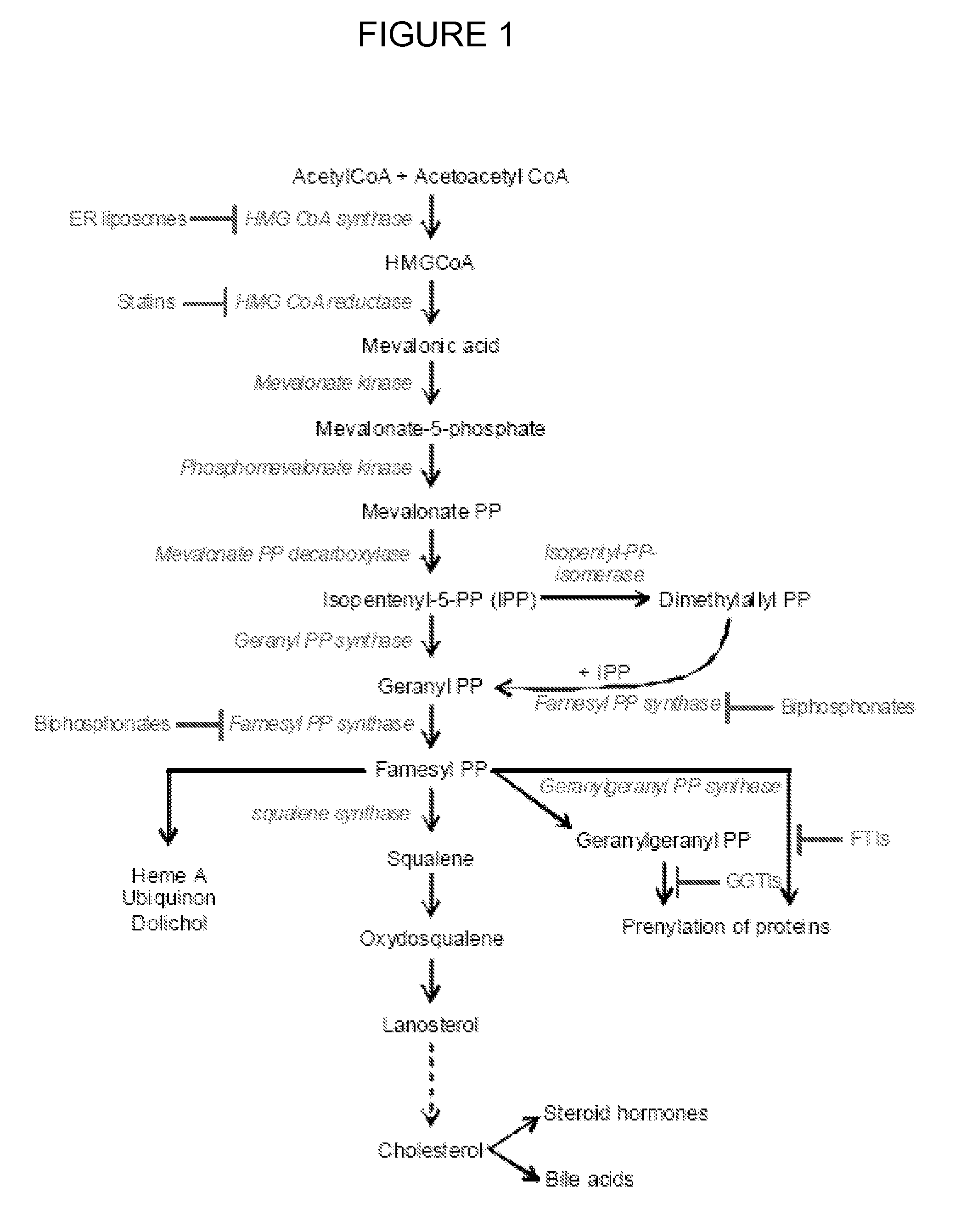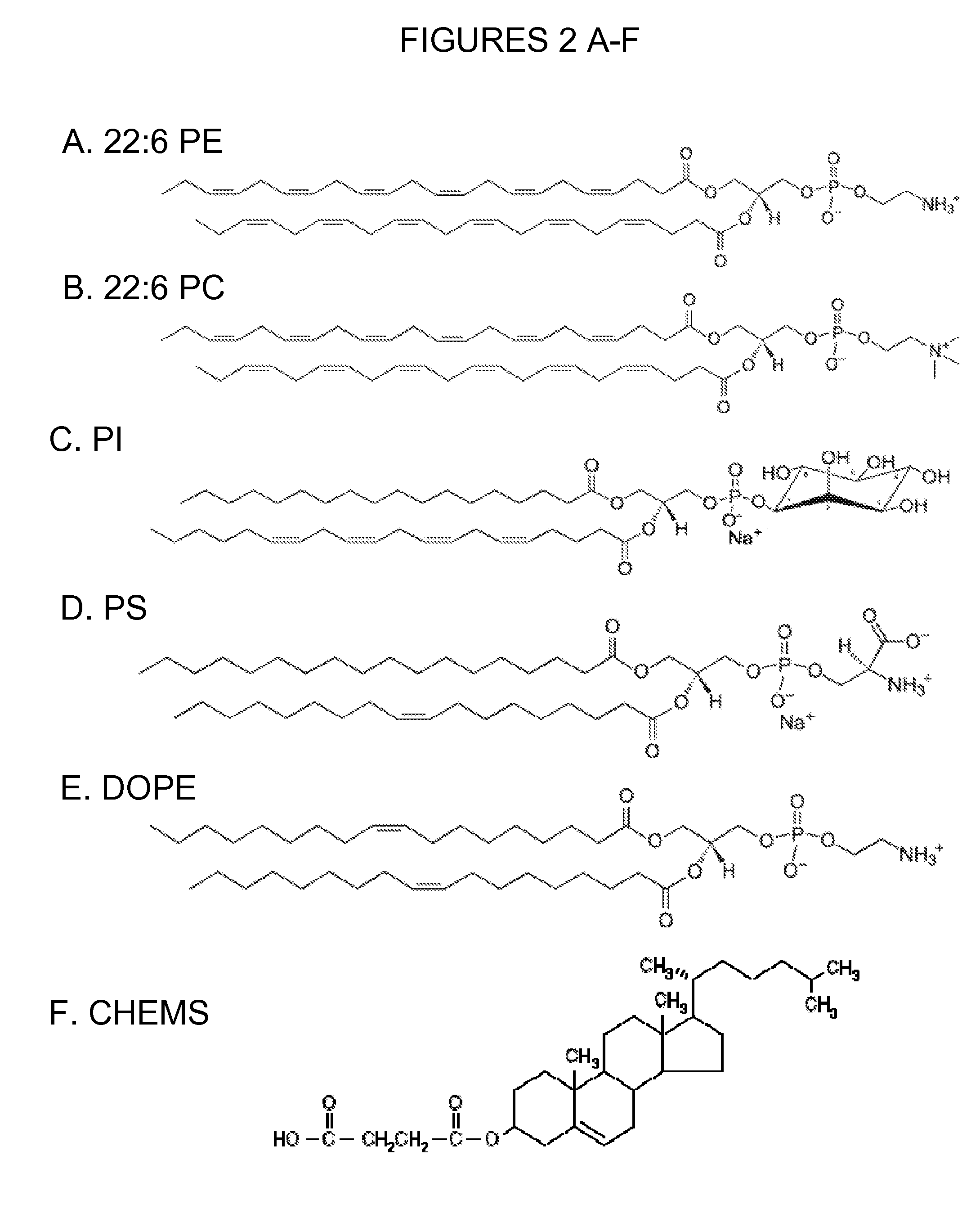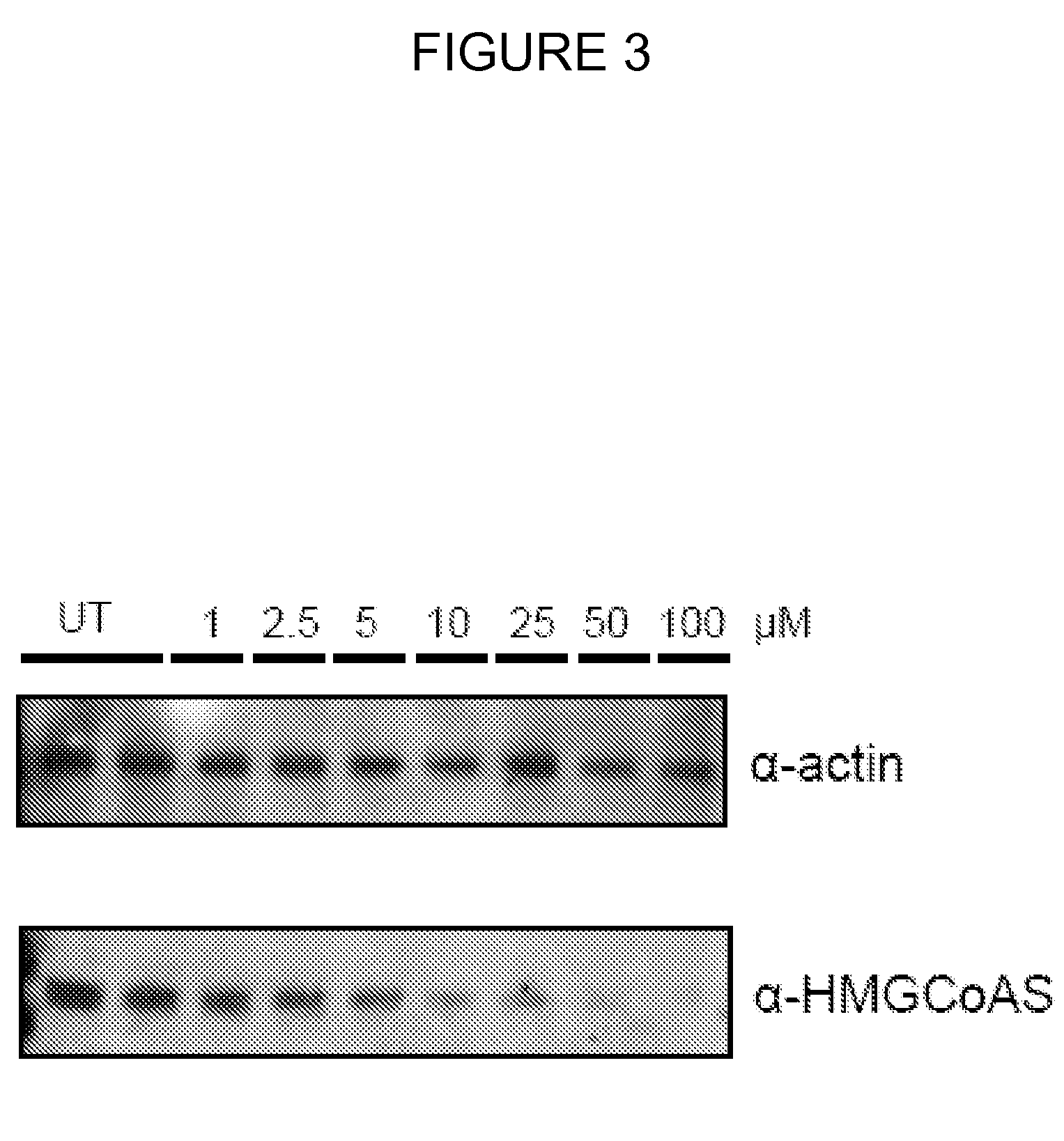Cholesterol level lowering liposomes
- Summary
- Abstract
- Description
- Claims
- Application Information
AI Technical Summary
Benefits of technology
Problems solved by technology
Method used
Image
Examples
example
[0083]A proteomic analysis of cells treated with liposomes, that are efficient carriers of small water soluble molecules into the intracellular compartments of target cells, has shown that treatment leads to the downregulation of a key enzyme involved in cellular cholesterol biosynthesis, 3-hydroxy-3-methylglutaryl (HMG)-CoA synthase. Further experiments have shown that this downregulation may lead to decreased cholesterol levels, both free and esterified, within treated cells. Since the early stages of atherosclerosis and coronary artery disease begin with the formation of foam cells, which are cholesterol-laden macrophages, and because liposomes accumulate within macrophages following, for example, subcutaneous injections, liposome treatment may be a new, targeted treatment for these diseases. Furthermore, many viruses have been shown to be dependent on normal to increased cellular cholesterol levels, therefore the combination of decreased cholesterol levels in addition to the eff...
PUM
| Property | Measurement | Unit |
|---|---|---|
| Antimicrobial properties | aaaaa | aaaaa |
| Level | aaaaa | aaaaa |
Abstract
Description
Claims
Application Information
 Login to View More
Login to View More - R&D
- Intellectual Property
- Life Sciences
- Materials
- Tech Scout
- Unparalleled Data Quality
- Higher Quality Content
- 60% Fewer Hallucinations
Browse by: Latest US Patents, China's latest patents, Technical Efficacy Thesaurus, Application Domain, Technology Topic, Popular Technical Reports.
© 2025 PatSnap. All rights reserved.Legal|Privacy policy|Modern Slavery Act Transparency Statement|Sitemap|About US| Contact US: help@patsnap.com



